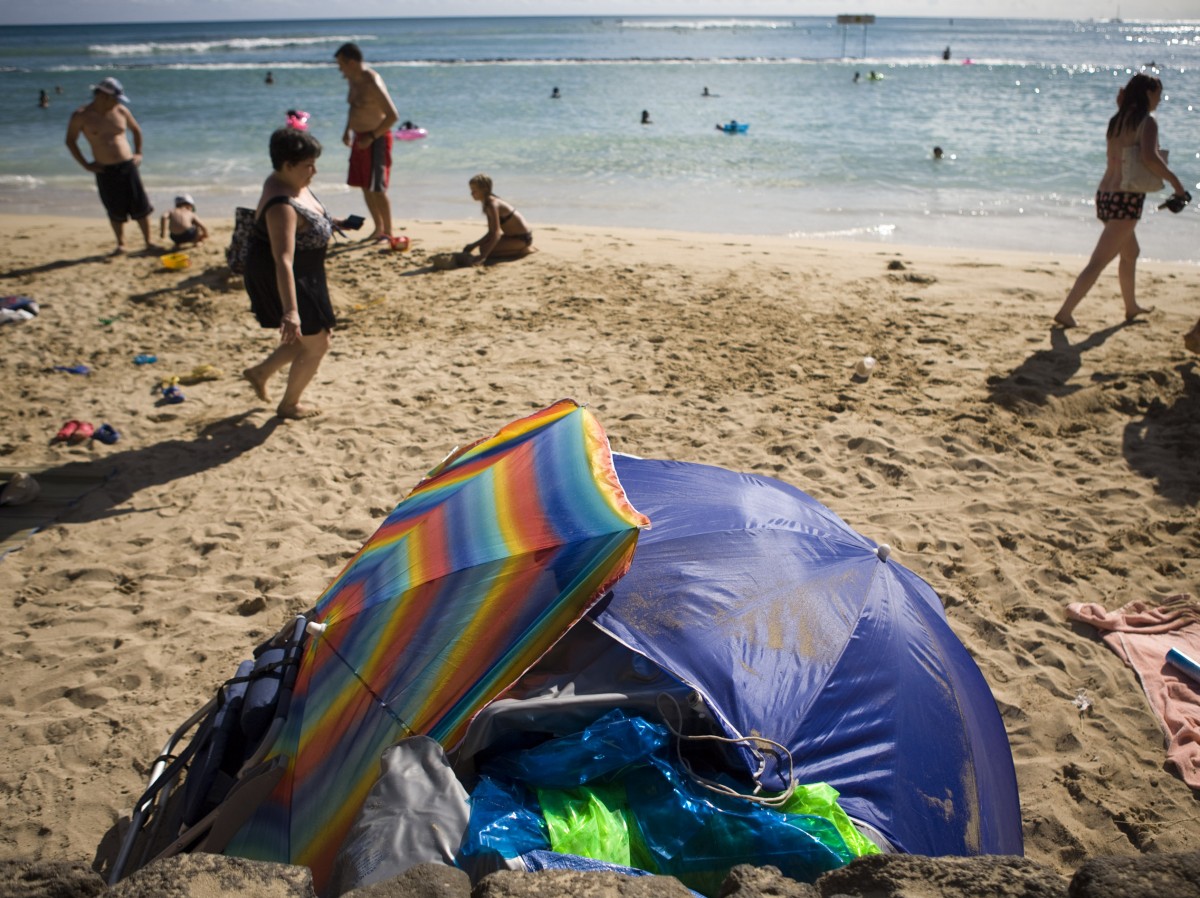
Hawaii state legislators have allocated $100,000 in hopes of moving a portion of the state’s roughly 17,000 homeless residents to the U.S. mainland. The idea follows similar plans put forward by elected officials in New York City and Baton Rouge, La., that fund the relocation of homeless populations without offering any concrete solutions to help decrease poverty.
Business Insider reports that under Hawaii’s plan, homeless individuals who can pass a background check and obtain proper identification for travel are eligible for a one-way ticket to help them connect with family or those offering them a place to stay.
“It’s a controversial idea. Critics point to potential abuse of the program and view it as a Band-Aid approach to a deeply rooted problem,” writes Nathan Eagle of the Honolulu Civil Beat.
“But supporters see it as a win-win. The homeless get a fresh start in a supportive environment and the state can focus its limited funding on local residents.”
Legislators have already approved $100,000 for the three-year trial run, but even proponents say that it will only result in the relocation of a few hundred people.
“It’s fractional, it’s not for 5,000 homeless people,” state Rep. John Mizuno, a Democrat, told the Huffington Post. “It’s going to be a handful of homeless people that we send home, again – home to their support unit.”
Critics believe that the plan is simply shuffling homeless populations to different areas without offering any real solution to the epidemic of homelessness across Hawaii and the entire U.S.
“These kinds of programs have been used historically to ship homeless people out of town,” said Michael Stoops of the National Coalition for the Homeless in a statement to MSN. “In the homelessness field it was once called Greyhound therapy. Hawaii now goes a step higher with airplane therapy. Oftentimes local police departments run such programs offering the stark choices of going to a shelter, jail or hopping on a bus or plane home.”
Tracking the size of the homeless population is difficult, but the National Alliance to End Homelessness, a nonprofit organization, reports that roughly 633,782 people experienced homelessness in January 2012. As Hawaii legislators ship the homeless out of state, there are no plans in place to help these individuals find housing, jobs and a stable life.
Hawaii’s plan is similar to one that was promoted by New York City Mayor Michael Bloomberg in 2009. At that time, some homeless New Yorkers were given bus and plane tickets that were supposed to help them reconnect with family in other parts of the U.S.
“The city is engaged in cosmetics,” said Arnold S. Cohen, president and chief executive of the Partnership for the Homeless in a 2009 New York Times interview. “What we’re doing is passing the problem of homelessness to another city. We’re taking people from a shelter bed here to the living room couch of another family. Essentially, this family is still homeless.”


